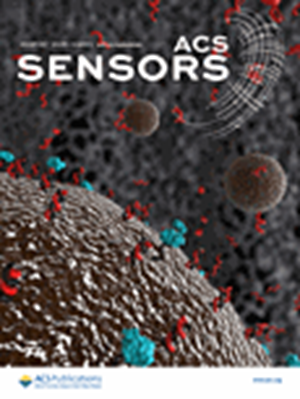Direct Current Redox Imaging of Single Retinal Pigment Epithelial Cells Using Light-Addressable Electrochemistry at Semiconductor Electrodes.
IF 8.2
1区 化学
Q1 CHEMISTRY, ANALYTICAL
引用次数: 0
Abstract
Light-addressable electrochemistry (LAE) enables the activation and detection of localized faradaic electrochemical processes on a flat, unconstructed semiconductor electrode through targeted light illumination, making it a promising approach for single-cell electrochemistry. Herein, we report a direct current (DC) redox imaging technique for single retinal pigment epithelial cells utilizing LAE with an α-Fe2O3 electrode activated by a constant, focused laser beam. The proposed DC-LAE method showed micron-scale resolution and was successfully used to image single cells under physiological conditions. We demonstrated that the visualization was primarily due to the hindrance of photoinduced OH- oxidation by adherent cells, resulting in a reduction of local photocurrents. Inspired by this funding, electroactive substances with high redox activities, such as hydroquinone (HQ), l-ascorbic acid (AA), and potassium ferricyanide (K4Fe(CN)6) were introduced into the culture medium. These substances significantly enhanced the DC redox imaging performance under low-intensity laser conditions without compromising cell viability. We believe that integrating pure DC-LAE with cell imaging advances quantitative analyses of cellular electrochemical behavior, offering valuable insights into cellular functions and processes.利用半导体电极的光寻址电化学技术对单个视网膜色素上皮细胞进行直流氧化还原成像。
光寻址电化学(LAE)能够通过定向光照激活和检测平坦的、未构建的半导体电极上的局部法拉第电化学过程,使其成为单细胞电化学的一种有前途的方法。在此,我们报道了一种利用LAE和α-Fe2O3电极对单个视网膜色素上皮细胞的直流氧化还原成像技术,该电极由恒定的聚焦激光束激活。所提出的DC-LAE方法具有微米级的分辨率,并成功地用于生理条件下的单细胞成像。我们证明了可视化主要是由于粘附细胞的光诱导OH-氧化的阻碍,导致局部光电流的减少。受该基金的启发,将具有高氧化还原活性的电活性物质,如对苯二酚(HQ)、l-抗坏血酸(AA)和铁氰化钾(K4Fe(CN)6)引入培养基。这些物质显著提高了低强度激光条件下的直流氧化还原成像性能,而不影响细胞活力。我们相信,将纯DC-LAE与细胞成像相结合,可以推进细胞电化学行为的定量分析,为细胞功能和过程提供有价值的见解。
本文章由计算机程序翻译,如有差异,请以英文原文为准。
求助全文
约1分钟内获得全文
求助全文
来源期刊

ACS Sensors
Chemical Engineering-Bioengineering
CiteScore
14.50
自引率
3.40%
发文量
372
期刊介绍:
ACS Sensors is a peer-reviewed research journal that focuses on the dissemination of new and original knowledge in the field of sensor science, particularly those that selectively sense chemical or biological species or processes. The journal covers a broad range of topics, including but not limited to biosensors, chemical sensors, gas sensors, intracellular sensors, single molecule sensors, cell chips, and microfluidic devices. It aims to publish articles that address conceptual advances in sensing technology applicable to various types of analytes or application papers that report on the use of existing sensing concepts in new ways or for new analytes.
 求助内容:
求助内容: 应助结果提醒方式:
应助结果提醒方式:


